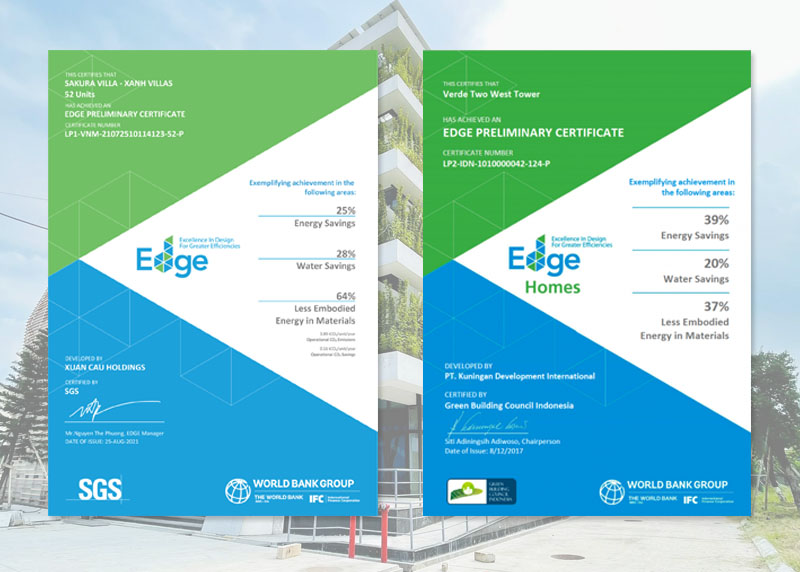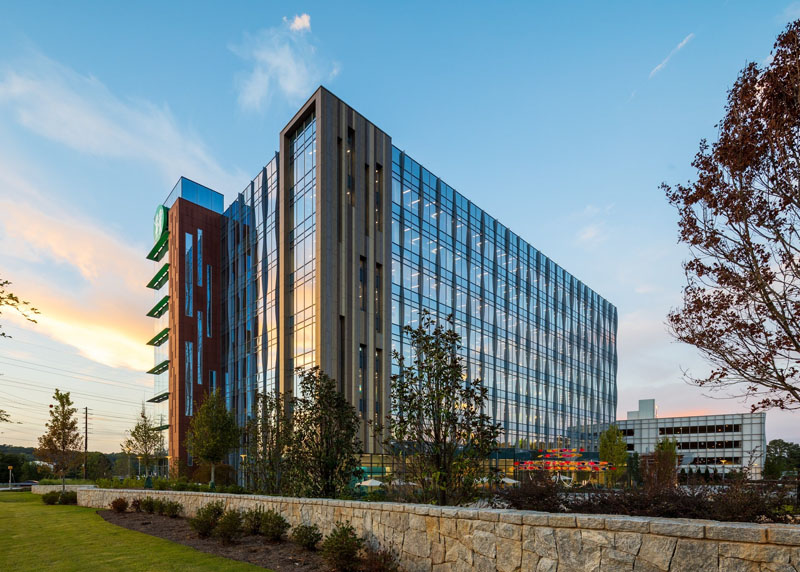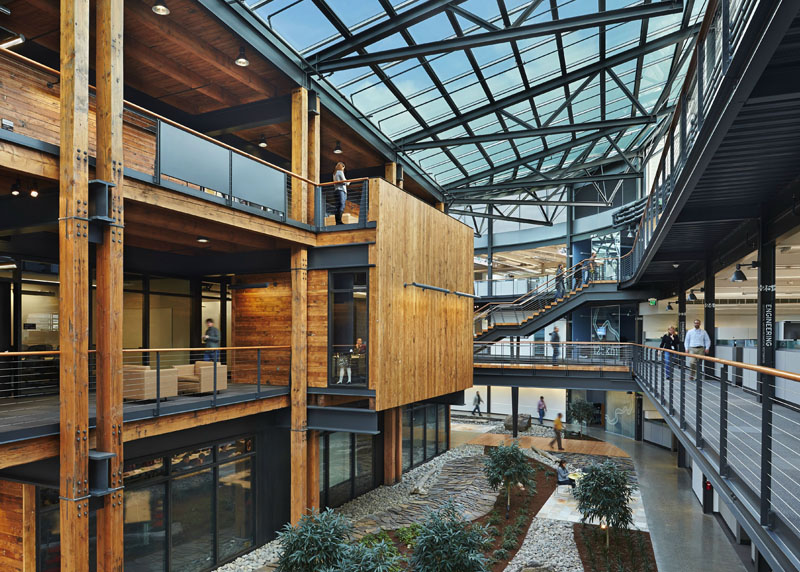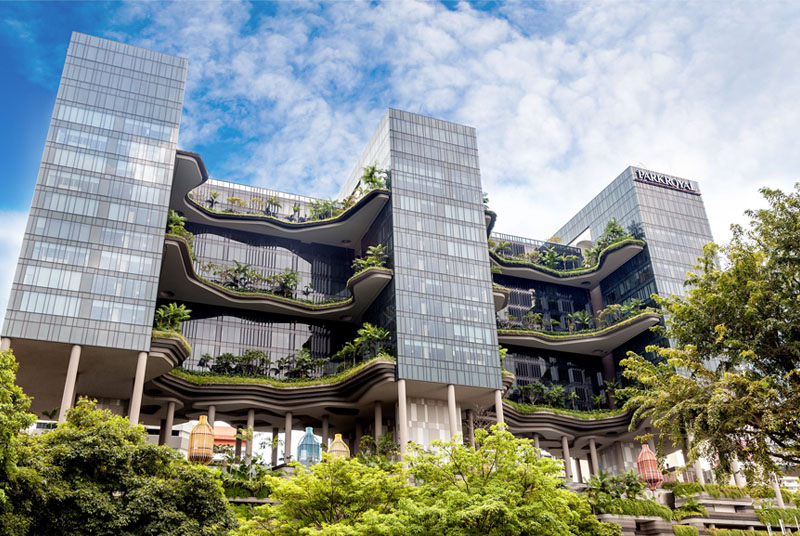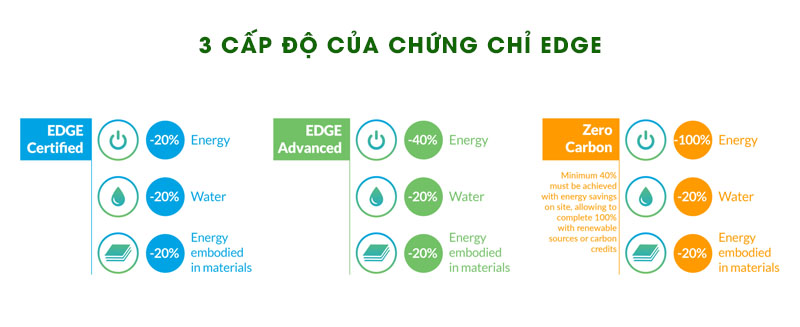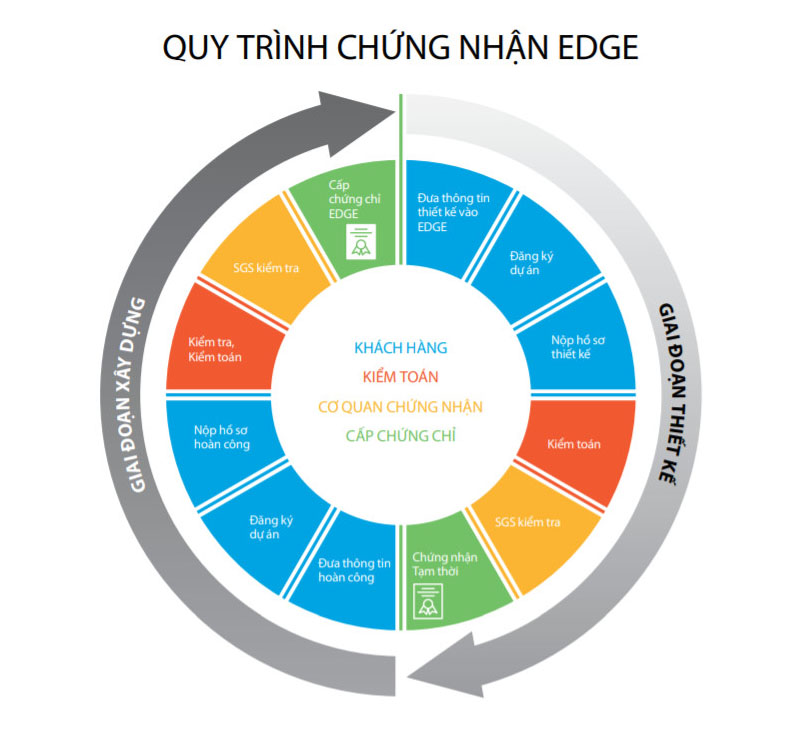EDGE Certification: Green Building Standard for Resource Efficiency
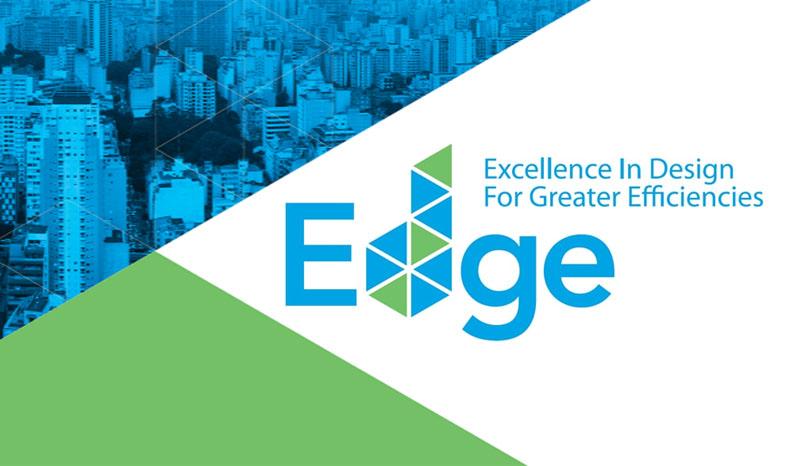
In recent years, the construction of sustainable green buildings has become a growing global trend in the construction industry. As a result, a series of new green building standards have been developed by leading international organizations. Among them, the EDGE certification has emerged as a valuable tool, promoting the construction of sustainable, efficient, and environmentally friendly buildings.
Table of Contents
1. What is EDGE Certification?
EDGE (Excellence in Design for Greater Efficiencies) is a green building certification system designed to promote the construction of sustainable buildings that use resources efficiently and are environmentally friendly. It helps reduce greenhouse gas emissions and address various environmental and climate issues.
EDGE certification focuses on technical solutions that enhance energy efficiency while balancing economic optimization. It is applicable to various types of buildings, from residential homes, apartments, and hotels to offices and shopping centers. EDGE is recognized as an ideal standard for developing countries.
See more about global green building certifications:
- LEED Certified
- WELL Certified
- Green Mark certification
- LOTUS certification
- EDGE certification
- Green Star certification
2. Background of EDGE Certification
EDGE was developed by the International Finance Corporation (IFC), a member of the World Bank Group. IFC created EDGE as a simple, cost-effective solution to encourage sustainable and efficient building practices in developing countries.
The goal of EDGE is to promote energy-saving practices and the efficient use of resources in the construction sector. Additionally, EDGE aims to reduce negative environmental impacts and curb greenhouse gas emissions.
Since its inception, IFC has collaborated with local and international organizations to effectively implement EDGE certification across multiple countries. Thanks to its simplicity, cost-effectiveness, and efficiency, EDGE has attracted attention from investors, developers, and governments globally.
3. Benefits of EDGE Certification
EDGE is not only an environmental performance evaluation tool but also a catalyst for sustainable development, creating positive changes within communities and societies. The implementation of EDGE standards offers the following benefits:
- Sustainable and environmentally friendly construction: EDGE promotes building projects that are energy-efficient, reduce water consumption, and use natural resources sustainably. This significantly contributes to environmental protection and reduces greenhouse gas emissions.
- Operational cost savings: EDGE-certified projects typically save 15-30% of energy compared to conventional buildings. This translates into lower long-term operational costs and optimizes the operating expenses of construction projects.
- Enhanced real estate value: Real estate projects that meet sustainability and energy efficiency standards tend to be valued higher, attracting investors and prospective buyers interested in green projects.
- Building corporate reputation: EDGE is one of the most reputable green certifications globally, authorized by IFC. It demonstrates trustworthiness and high credibility for projects that meet EDGE standards, strengthening a company’s reputation in the market.
- Encouraging competition and innovation: Achieving EDGE certification showcases a company’s commitment to sustainable and efficient construction, encouraging industry competition and fostering innovation in modern construction practices.
EDGE certification offers numerous benefits, not only for the environment and natural surroundings but also for economic and social development. It contributes significantly to the global goal of fostering a sustainable future.
4. EDGE Certification Evaluation Standards
To achieve EDGE certification, buildings must reduce energy, water, and material usage by a minimum of 20% compared to a standard building. The goal is to help investors and contractors design and construct buildings that save resources, protect the environment, and enhance cost competitiveness. The key evaluation standards for EDGE certification include:
4.1 Energy Efficiency
EDGE’s energy criteria focus on measures that can be implemented to reduce a building’s energy consumption compared to conventional buildings of the same scale. Some measures that can be applied include:
- Using energy-efficient systems and technologies.
- Integrating renewable energy sources like wind and solar power.
- Optimizing energy usage through strategies like insulation, utilizing natural light, efficient ventilation, cooling systems, and lighting.
These measures not only save energy but also reduce operational costs and create healthier living and working environments.
4.2 Water Efficiency
Water conservation is one of the key evaluation criteria for EDGE. This standard encourages measures to reduce water consumption in buildings compared to similar projects. Measures include:
- Installing water-saving fixtures.
- Reusing treated wastewater for purposes like irrigation or cooling.
- Installing rainwater collection and treatment systems.
- Implementing smart water management systems to monitor and control water usage.
- Designing efficient plumbing systems to minimize leaks and water waste.
- Using automated, water-efficient irrigation systems.
4.3 Sustainable Use of Materials and Resources
EDGE emphasizes minimizing the environmental impact of buildings throughout their lifecycle, from design and construction to operation and decommissioning. Green projects must use sustainably sourced construction materials and natural resources. Additionally, recycling and reusing materials are strongly encouraged to reduce waste and protect the natural environment.
Using EDGE software, companies can calculate and measure the savings and efficiency of a project compared to buildings of similar size.
5. EDGE Certification Levels
Based on the degree of energy, resource savings, and project efficiency compared to conventional buildings, companies receive an EDGE certification level. EDGE certification is categorized into three levels:
- EDGE Certified: This is the minimum level of certification. Projects need to save at least 20% of energy, water, and materials compared to conventional buildings of the same scale. The score required to achieve EDGE Certified certification is between 10 – 19 points.
- EDGE Advanced (Zero Carbon Ready): This level requires projects to achieve a minimum of 40% savings in energy, water, and resources compared to conventional buildings of the same scale. Achieving EDGE Advanced certification demonstrates a stronger commitment to green and sustainable construction. To attain Zero Carbon Ready certification, a project must score between 20 – 29 points.
- Zero Carbon: This is the highest level of EDGE certification. Projects must achieve at least 50% savings in energy, water, and resources compared to conventional buildings. Projects that achieve EDGE Zero Carbon certification demonstrate leadership and innovation in sustainable construction. To achieve this certification, a project needs to score 30 points or higher.
6. Process for EDGE Green Building Certification
EDGE certification is widely used in over 100 countries, including Vietnam. The certification process is convenient, straightforward, and cost-effective, making it suitable for many businesses. The process is divided into two main phases: the design phase and the construction phase.
- Design Phase: The EDGE certification process begins during the design phase by entering project parameters into EDGE software and selecting green solutions. The project must then be registered with SGS, an international organization that provides inspection, verification, testing, and certification services. SGS is responsible for monitoring certification programs and issuing EDGE certifications for projects in Vietnam. After receiving and auditing the design documents, the project will be issued a temporary certification before proceeding to the next phase.
- Construction Phase: After construction is completed, the project will undergo an inspection by SGS, assessing factors like overall building checks, EDGE criteria compliance, and the performance of technical systems. If the project meets the requirements, SGS will issue an official EDGE certification.
The total cost for registration, evaluation, and certification for EDGE generally ranges from USD 2,000 – 8,000 for projects with sizes ranging from 5,000 – 50,000 m².
EDGE certification is a highly respected international green building standard used globally. The implementation of EDGE standards not only benefits developers and users but also contributes to environmental protection and the development of a sustainable future.

Editor and content team manager at Maison Office.
With over 5 years of experience in consulting and extensive content editing in the real estate services and interior design field. Sharing valuable information with customers, partners, and attracting millions of views.

